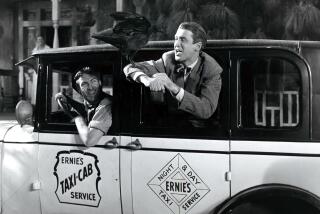Focus on Planning for the Best Christmas Shots
- Share via
Today’s point-and-shoot vi deocameras make recording the Christmas holidays and other activities easier than ever. Here are some suggestions for recording and editing:
* Charge your batteries (and a spare) before the big event, especially if you’ll be traveling to another town. Think about shots in advance: relatives arriving, cookie-making, kids bedding down before Santa arrives.
* Look at last year’s videos to get an idea of what to repeat and what to improve. Flip through magazines for a sense of camera angles and good photo ideas. For your first bits of footage on a new cassette, create an opening scene, such as packing your car to head to the family get-together or turning on the tree lights for the first time. Get the family funster to talk to the camera: “We’re off to Grandma’s for Christmas.”
* Go easy on the trigger. Nothing will strain a friendship more than forcing folks to sit through tedious, repeated scenes of people opening packages or eating turkey. Tape scenes for only 15-30 seconds at a time -- unless something truly dramatic occurs.
* Use the zoom carefully. Every camcorder these days has a zoom lens that’s easily operated by pressing a switch to bring a subject extremely close -- great for facial expressions at gift-opening time -- or to offer a wide view. But beware of recording the zooming motion. While the camcorder is in the pause mode, zoom in or out to the desired image, then press record.
Also watch out for excessive zooming, a common error that makes viewers feel as if they are on a rolling ship. To make direct cuts like the pros do, put the camcorder into pause after you tape a scene.
* Don’t rock and roll. Like excessive zooming, shaky hands also can make viewers queasy. Today’s smaller camcorders are easier to carry but more difficult to hold steady. An easy remedy is to use a monopod (about $30) to hold the camera steady. Some models now offer a built-in circuit to smooth out the jerky motion.
* Pan professionally. When shooting a roomful of people or an overview of an outside scene, move the camcorder from left to right, slowly and on an even line. This panning technique works especially well with a monopod. For variety, don’t be afraid to tape at various camera heights.
* Add titles. Most new camcorders offer digital title superimposition, which lets you surprint a title in a variety of colors onto live video action. You draw a title, such as “Christmas 1993,” on paper and store the image into the camcorder’s memory. When you choose, just press the title button, and the image will appear over the scene being taped, in a color you have chosen. Some models make the process even easier, with plug-in modules, many with music.
* Take time to edit. Everyone makes shooting mistakes that would end up on the cutting-room floor in Hollywood. Here’s where editing comes in. Check the owner’s manual for details on the equipment required (at least another VCR) and the step-by-step procedures to dub scenes from the original onto a separate tape. A key device is the Flying Erase Head, a gadget found on most higher-end VHS camcorders and all 8-millimeter models. This eliminates “rainbows” that show up when tapes are edited. Cuts between edited scenes will be sharp.


